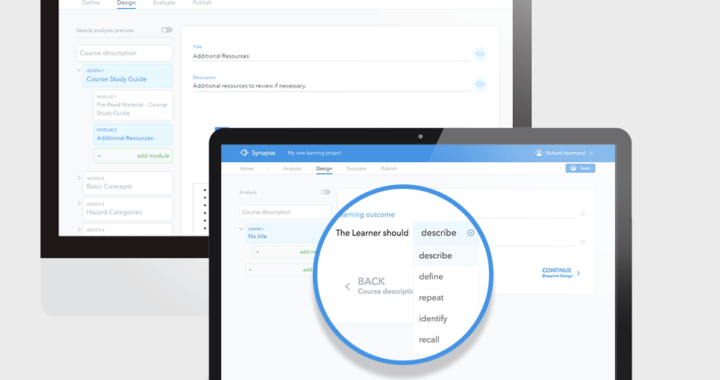Synapse is a learning experience design tool for documenting the Analysis, Design, Development, Implementation, and Evaluation or ADDIE process of instructional design. As an instructional designer, I always struggled with limited resources to document all stages of a learning project. Often this meant having to manually deal with content versions, shared drives, spreadsheets, and other resources. In some organizations, project management software like Microsoft Project or Zoho has been the answer thus far but, these tools were not developed with Instructional Systems Design’s (ISD) methodology in mind. This is the business need and documentation gap Synapse covers as a product which strategically addresses ADDIE documentation, storyboarding and asset management. Let’s see what this app can do for instructional design teams in Learning and Development (L&D).
One Place and All Devices
Synapse is a cloud-based solution designed to be fully responsive on all devices. Teams can collaborate from anywhere, simultaneously, at any time, from desktops, laptops, tablets, and smartphones (using a mobile browser). Centralization of efforts is the key to success because ISD projects often have multiple moving parts. Therefore, the larger your team, the most benefits it can reap from using Synapse. The following will give you a great overview of what the app can do with a quick sample project I built.
Synapse is easy to use
The product is well designed to cater to the needs of the least techie ID and that’s a great thing in software. You won’t have to spend time nor money training users on how to get started. The image below shows a minimalist approach which shows existing projects and as you click the big “+” sign, it will guide you through a sequence of steps to document project essentials.
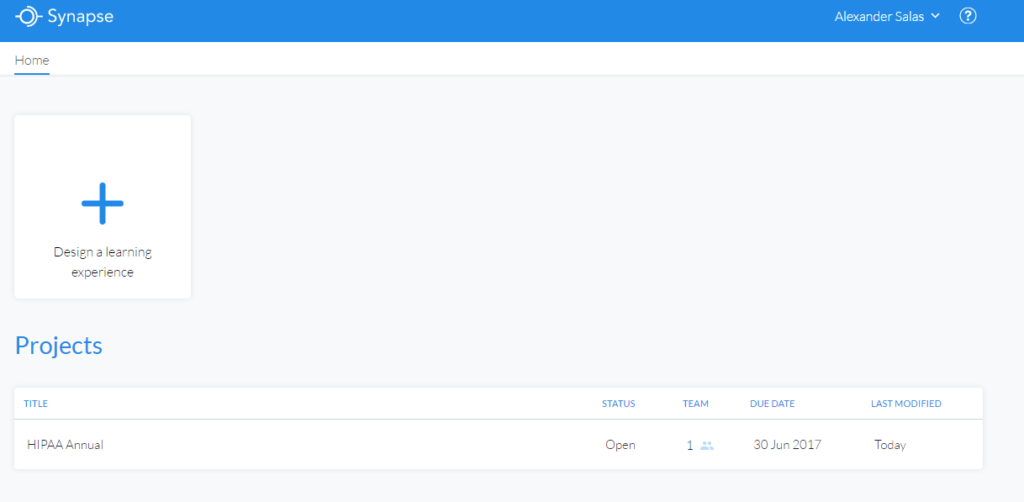
Needs Analysis
The key component in every learning project is the analysis of learning needs. After entering basic project information such as Project ID, Title, Description and Due Date, Synapse takes you to the Analysis page where you get to document Organizational Needs, Performance Goals, Audience and Delivery Methods involved.
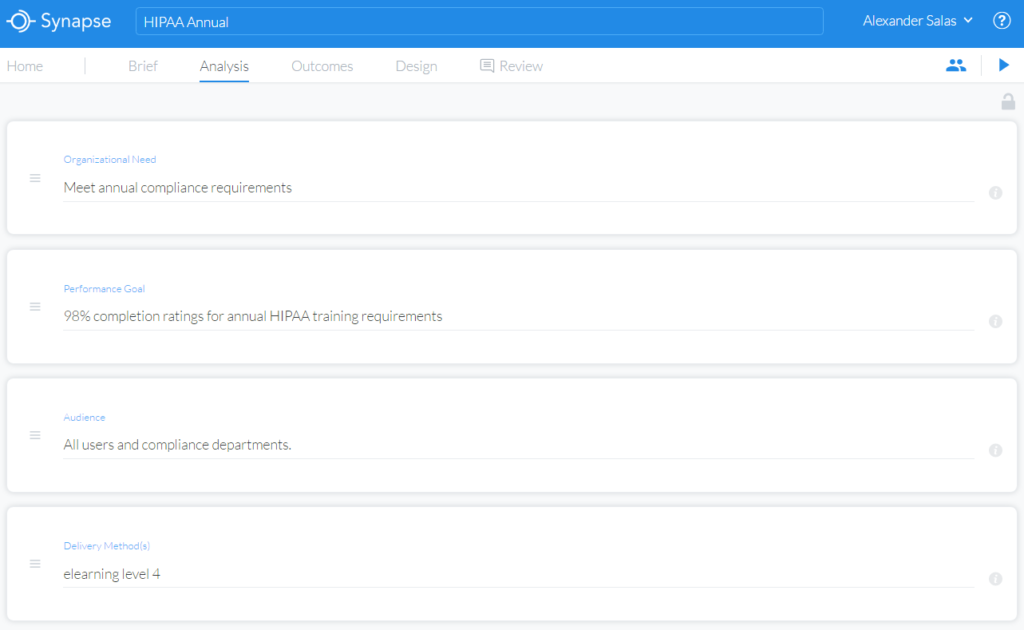
Recall Feature
One of my favorite features from Synapse is something I call the “Recall” feature. Instructional Designers document things so they can reference them but, that often means opening a bunch of application windows. The recall feature appears as a toggle button which overlays the previous details on your active screen. In the case below, I needed to reference to some of the Analysis details and used the recall to quickly check them out without having to leave my current “Outcomes” screen.
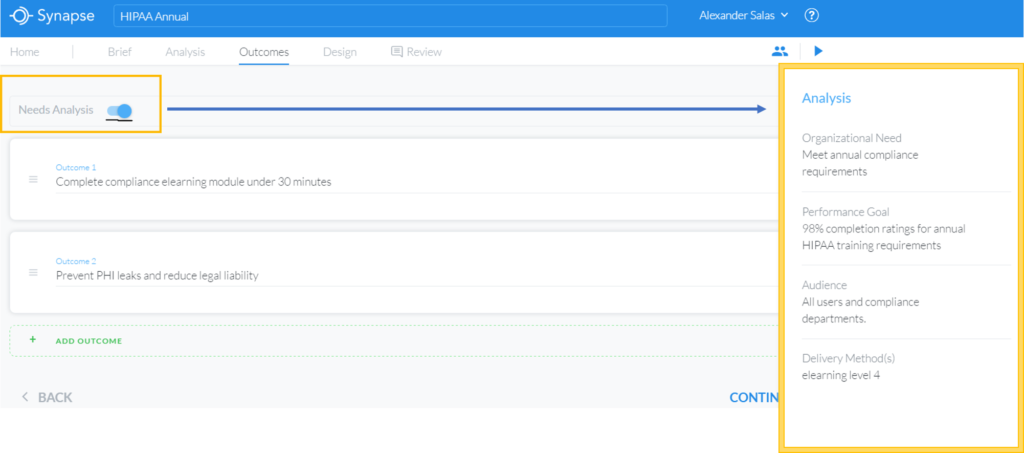
Outcomes
Synapse offers an “Outcomes” page which can be used to document performance goals or enabling objectives. The key focus here is that we have the advantage of recalling the needs analysis as seen above so, all we would need to do is to align our outcomes to each of the needs documented.
Design Documentation
The design page in Synapse is a great combination of many instructional design “must haves”. As you create the course outline overview, it would guide you to add lessons, learning objectives for each lesson and topics within.
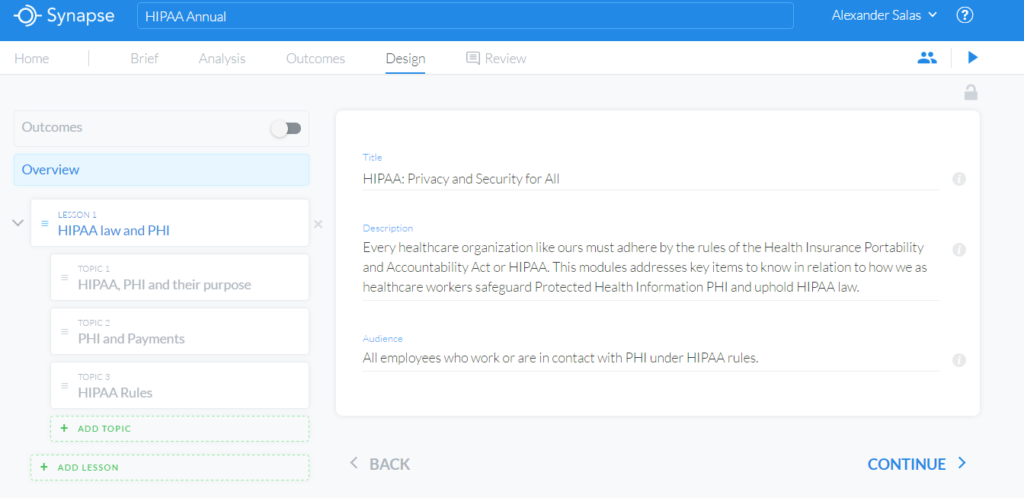
Bloom’s Action Verbs
This by far is the most impressive feature in the whole app. Bloom’s Taxonomy is a foundational theory for creating effective and meaningful learning. Synapse includes a library of action verbs and their application according to the desire learning level. This is a big time-saving feature and even educational for Jr IDs.
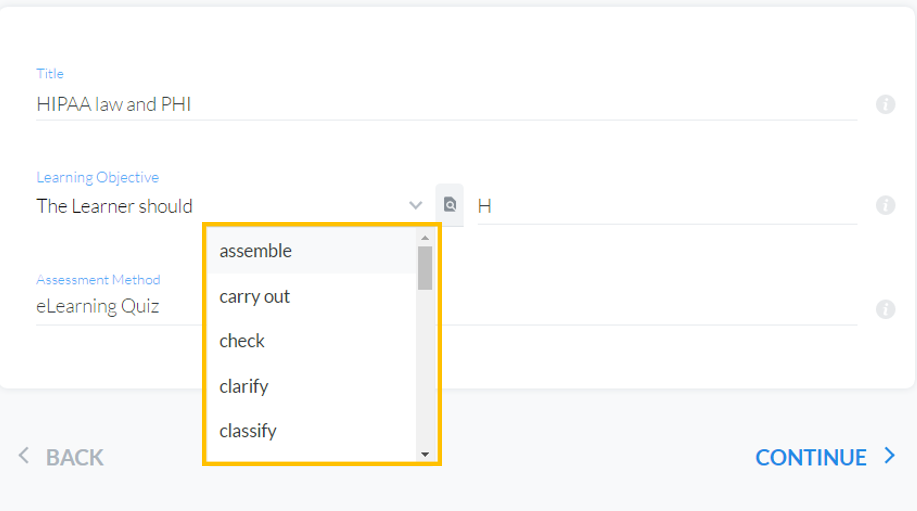
If not sure about the instructional value of the verb; just click on the search icon to use Synapse’s built-in Bloom’s matrix.
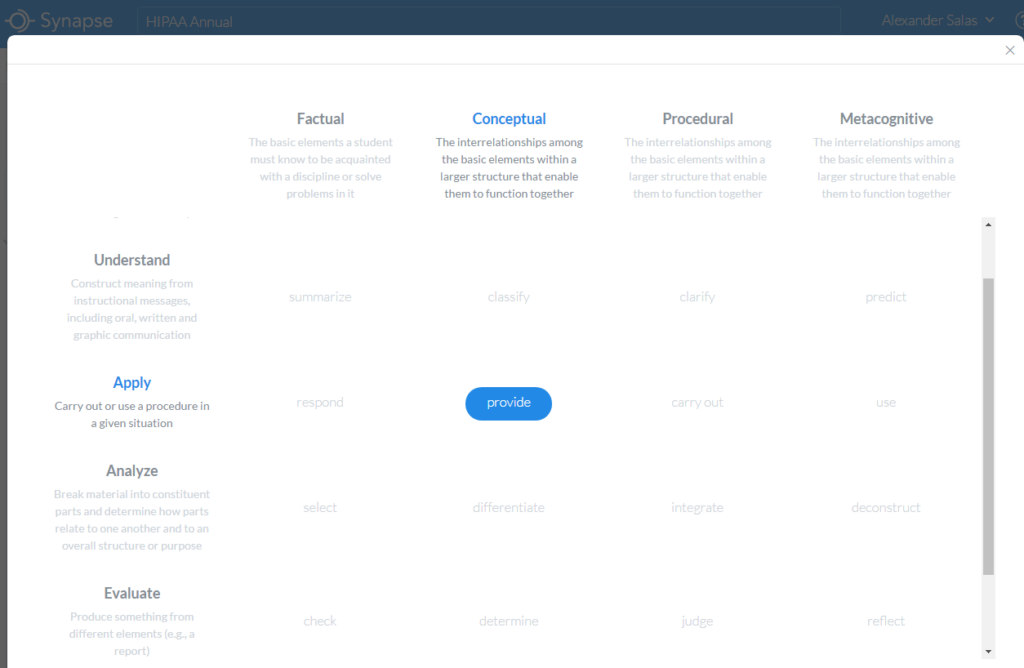
Content Sharing
All project related content can be stored in direct alignment with the topic of the course outline. The app has a video and PDF player which do not require users to download any files. Although not seen on the screenshot below, users have navigation arrows to view PDF pages embedded within the topic section. Also, text, images and even embedding video URLs like YouTube videos is available to share course specific content with Subject Matter Experts (SMEs) and other team members.

Collaboration and Review
We have saved the best for last! The great advantage of any cloud based tool is the ability to communicate and share in one place. Collaboration in Synapse is no different. The “Review” page is a huge step forward in your team development experience though. Just like Articulate360 did it for eLearning development with Articulate Review, team members can share their thoughts and notes on any stage or section of the project capturing their timestamp. Teams get notifications by email but, all comments and contributions are captured in the app comments log and not lost on emails.
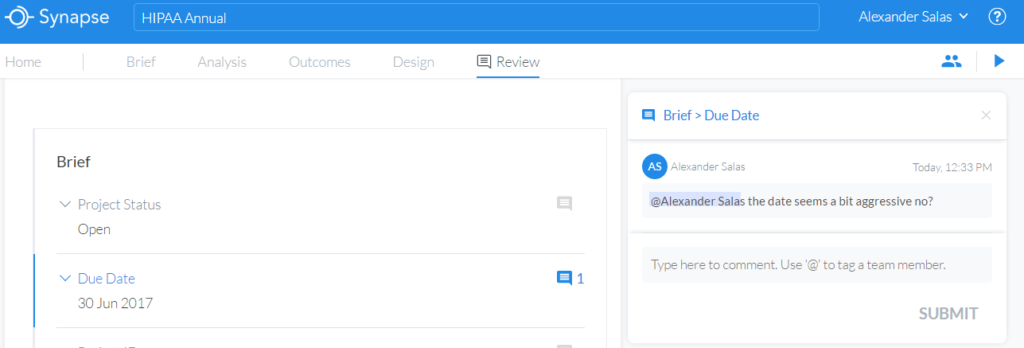
Limitations
- This review was based on the free trial available at getsynapse.com which is an individual account with unlimited users.
- Pricing is not bad at this point ($59-69 per month for a team account) for a product like this but, it should be more competitive.
- Synapse has to make some adjustments to be more “average” user-friendly. There’s a bit of use of jargon. For example; the “prototype” function should probably be renamed as “preview” since most SMEs and project sponsors may not be familiar with the former.
- No mobile app. The addition of a mobile app would make the notification process a bit more streamlined than just emails. It can also greatly improve the editing experience on mobile devices.
Wrap Up
In summary, instructional designers face many challenges when documenting their design process for courses, managing content files and reviewing progress. Those who are lucky may get to use project management software but, the problem is these applications are not specific to ISD methodology. Synapse offers an easy and viable solution for managing learning projects in a centralized manner for it is a cloud-based application functioning on any device. The ability to document the full design process and recall it at any stage is a big plus for instructional designers. Its limitations are easily manageable but, Synapse should consider improving upon them. Overall, this app would be a welcomed addition to any L&D development team as it would save time documenting, collaborating and collecting feedback in most learning projects.

